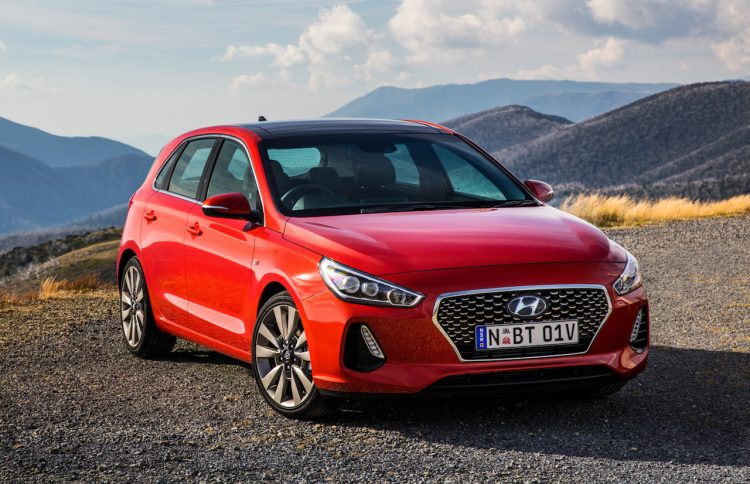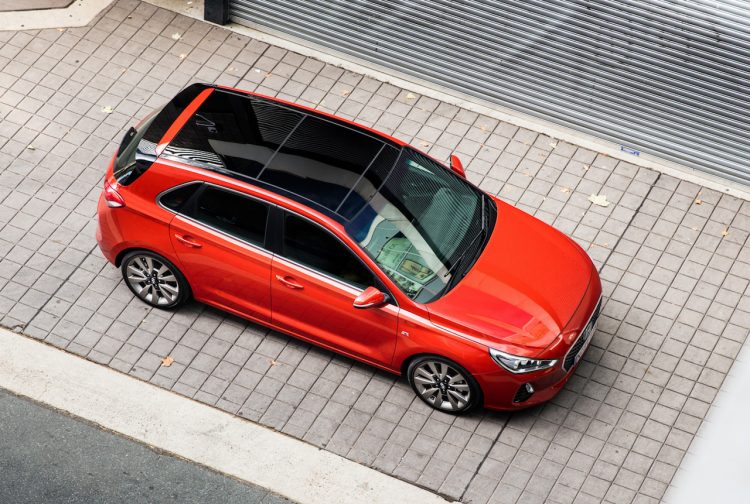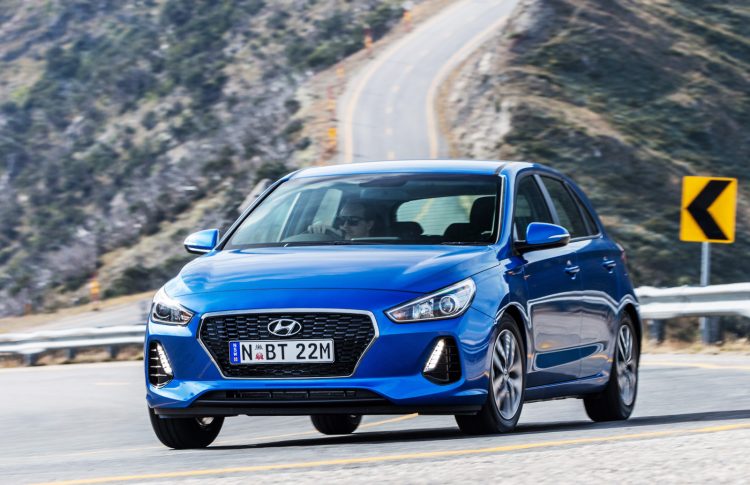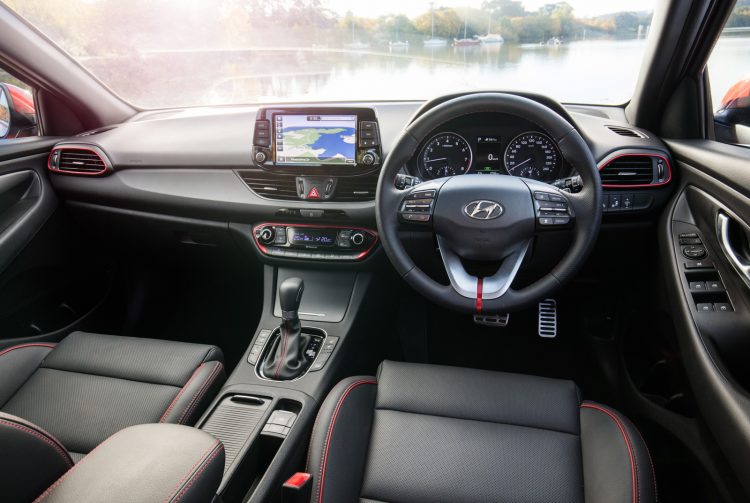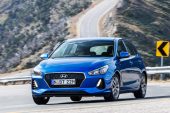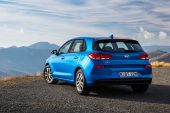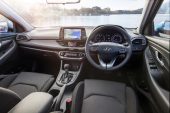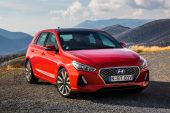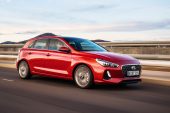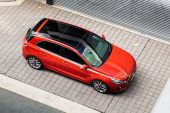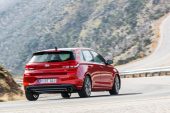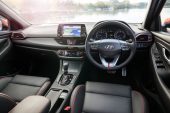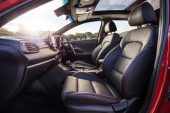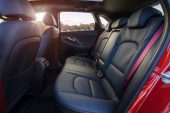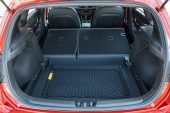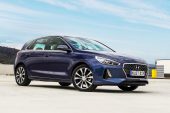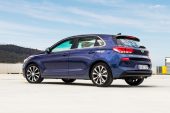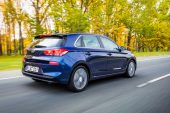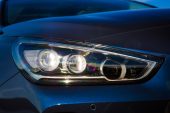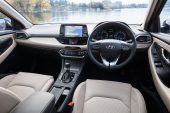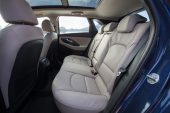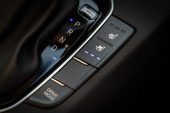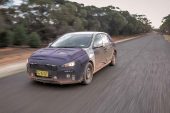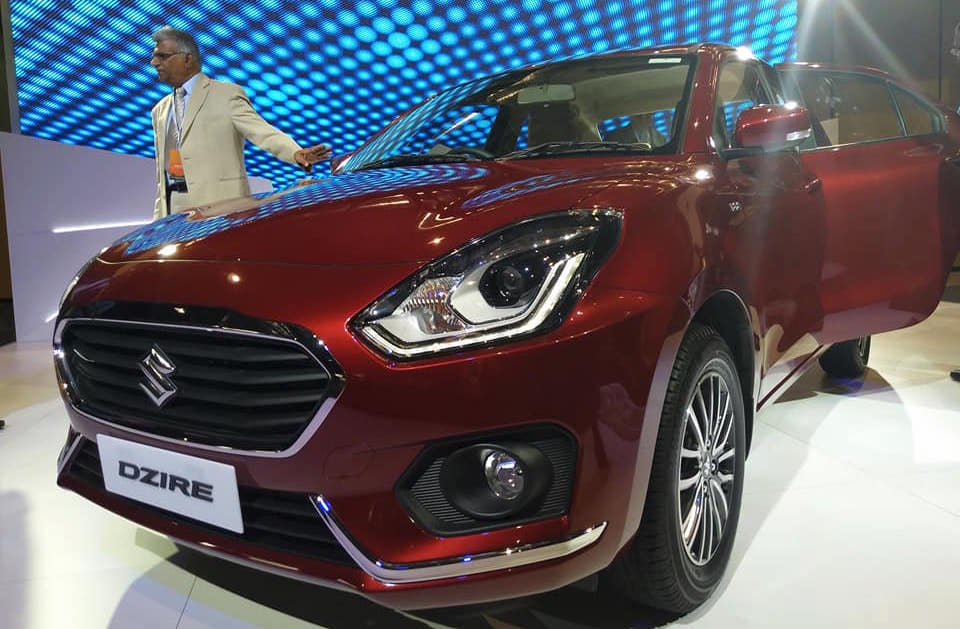Aside from this 2017 i30 major makeover, it will be huge year for Hyundai Australia. A facelifted Sonata is on the way, an all-new small SUV called Kona, the hybrid and electric Ioniq, and the brand’s first foray into the realm of serious sporting cars, with the i30N. By the time the planet has finished another revolution around the sun, Hyundai will be a very different company, competing in segments it never used to.
Before that, though, the brand is faced with the Herculean task of replacing its volume seller. The i30 accounts for roughly a third of Hyundai’s sales, with over 37,000 sold in 2016. This makes Australia the single biggest consumers of the European-designed hatchback. Now in its third-generation since 2007, the i30 is once again designed by Hyundai’s European Technical Centre, overseen by chief designer, Thomas Burkle.
While there are shades of Mk6 Golf to the rear end in our eyes, the front grille and headlight treatment give the car a more distinctive and recognisable face. The more taut and upright shape sits more confidently on the road than the outgoing model, too.
The PD-series i30 marks another step away from the brand’s traditional value emphasis to deliver a more holistic package, which still, incidentally, includes value.
Starting with a stronger bodyshell, the i30 utilises more high-strength steel than before. Dimensions are similar to the outgoing model, with a longer, 2650mm wheelbase, 4340mm overall length, 1795mm of width and 1455mm of height. The A-pillar has been moved backwards for a sportier look and better visibility.
Engines have received a significant overhaul, with the availability of a 1.6-litre turbo with 150kW and 265Nm matched to either a six-speed manual or seven-speed dual-clutch auto (DCT), a 1.6 turbo-diesel with 100kW and 300Nm (280Nm manual), and the biggest news of all sees the 120kW, 203Nm 2.0-litre GDi engine from the outgoing SR implemented in the $500-cheaper i30 Active. At $20,950 for the manual, it becomes the most powerful base model in its class. For $2300 more, a conventional six-speed automatic is available.
PerformanceDrive had the opportunity to test the i30 on an extensive test drive along the Murray River in rural Victoria as part of the official media launch, with all variants accounted for.
Starting with the base Active, the upmarket design is immediately apparent in person. 16-inch wheels on medium profile tyres are immediately noticeable. Stepping inside, the new interior design feels more premium with a horizontal wing-like panel spanning the dash. The new touch-screen incorporates satellite navigation, digital radio as well as Apple Car Play and Android Auto. On a base model, that is very impressive. What’s more, the navigation system is great to use, with split-screen, speed limit warning and lovely chimes like what you’d hear on a plane.
Its fuel consumption rating of 7.4L/100km is higher than class average, but given its higher 2.0-litre capacity, it can be driven in a relaxed manner, all the way to its 7000rpm redline. The six-speed manual version is tractable and easy to drive, with light clutch feel and shift action – albeit with a slightly long and vague throw. Standard cruise control highlights the car’s excellent noise suppression. The Active retains a torsion bar rear suspension setup, instead of the multi-link seen in the SR, but the standard chassis setup is surprisingly adept.
Steering feel is light yet lively, with no more switchable modes like the outgoing model, just one, well-sorted setting. It is direct with eager turn-in but a decent level of compliance. While not exactly a rocketship, 120kW is more than sufficient to break the speed limit in something this light. The only low-rent aspect of the Active would be the switch blanks littered throughout the interior; and if we’re being picky, there are plastics along the door panel and even the dash you would not find in a VW Golf. But the design, functionality and freshness of the new interior makes up for it.
If you want outstanding economy, the diesel engine is available stamped at 4.5L/100km for manual, or 4.7L/100km for DCT-equipped versions. We tested the DCT version, which suits the nature of the diesel extremely well. Torque delivery is so effortless, with no hint of diesel clatter from inside the cabin. At 110km/h, the engine is ticking over at 1850rpm. The chassis poise does not suffer for the additional 61kg of the diesel.
The Elite and Premium represent the more luxury-oriented path for the range, with perforated leather seats, active safety arsenal including adaptive cruise and panoramic sunroof available on the Premium, and a beige interior optional on both (depending on colour).
At $25,950, the 150kW SR manual is, in our opinion, the most fun to drive and best value i30 in the range. Despite using the same gearbox as the Active, it offers a shorter and far more precise throw. While not rifle-bolt mechanical it is a superb companion to the turbocharged engine and multi-link rear end, that encourages you to explore its limits. For $3000 more, the seven-speed dual-clutch gearbox is available, essentially the same unit in the recent Elantra SR. It also comes with an electronic park brake.
The highest specification for now in the sports range is the DCT-only SR Premium, that comes with switchable drive modes that add weight to the steering and hold the gears for longer. The added weight in Sport mode is welcome in tight switchbacks. It is so communicative it will even telegraph when the rear end is losing grip. Mildly bolstered seats do a good job of keeping you in place. There is no active sound enhancement, so what you hear is all natural and we are grateful for that.
Those chasing more thrills will have to wait until around the third quarter of this year for the i30N. With 184kW and 206kW, depending on spec, Hyundai is determined not just to match Golf GTI and Focus ST but beat them and offer features lacking in those cars. With former head of BMW’s M division Albert Biermann at the helm at Hyundai N, we are sure he will bring plenty of tricks and know-how.
The third-gen, 2017 i30 is a sound basis to achieve that, in our opinion, with even the base model exhibiting a cohesive, enjoyable character that you never got in a Hyundai before. The new i30 takes the unfair advantages of its predecessor and adds power, refinement, standard equipment and great steering to its arsenal.
Stay tuned for more extensive tests on specific variants in the near future, and for more information about the N vehicles.
